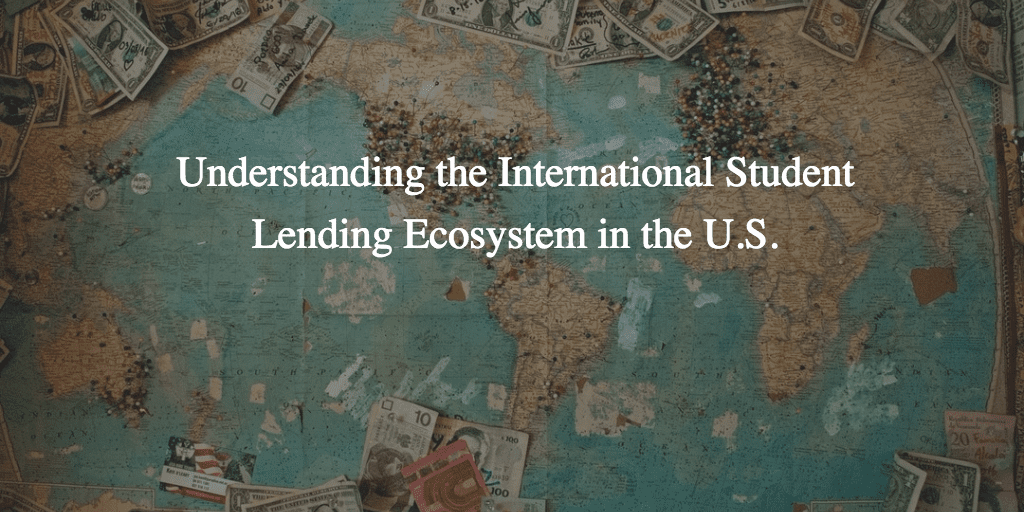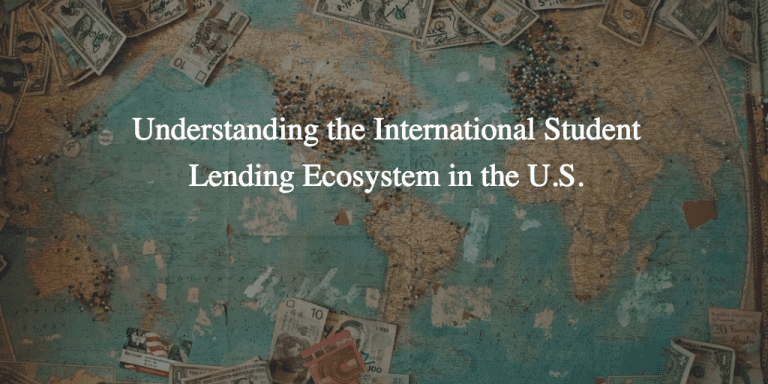
[Editor’s Note: This is a guest post from Nathan Treadwell, VP of Business Development at Nomad Credit. Nomad Credit is committed to lowering the barriers to credit for international students and visa holders. Nomad Credit’s platform helps internationals search for loan options through its partnerships with U.S. and foreign lenders.]
There are almost 1.2 million international students currently studying in the United States. They hail from countries all over the world with almost a third – more than 360,000 – coming from China and just over 205,000 coming from India. South Korea and Saudi Arabia follow behind dropping down to just over 70,000 and 55,000, respectively. With education costs often approaching six figures and beyond, an international student loan ecosystem has emerged both in the U.S. and abroad to serve the educational funding needs of this demographic.
U.S. lenders have taken great interest in lending to international students studying in the U.S. as the high costs of education provides great demand for a private funding source. Challenges lenders face with international students are similar to U.S. students in that they typically do not have any credit history. However, lenders must consider the additional flight risk involved as many of these students will not stay in the United States after graduating. Thus, new challenges may arise as lenders seek to collect on loans internationally.
How to Mitigate Flight Risk
It is challenging to know just how great the flight risk is, as it is an emerging market. Lenders have found ways to mitigate this risk through school involvement, U.S. cosigners and program consideration.
Before final approval, loan amounts are often certified with the borrower’s school to verify the borrower’s attendance and funding needed. Secondly, loans are disbursed directly to the school to ensure funds are used appropriately.
In addition to school involvement, lenders focus on top programs at top schools within the U.S. For some of these top programs, there are lenders who offer a no-cosigner loan product due to the future earning potential expected. Graduate students are the main focus for this product as there tends to be less risk. However, there has been some foray into the undergraduate no cosigner loan segment.
Further, U.S. lenders can draw insights on flight risk based on the field of study a student is pursuing. Depending on the program of focus, the ability to stay in the U.S. due to visa dynamics can differ. International students can choose to take advantage the Optional Practical Training (OPT) program after graduating. This program allows a student to extend their stay up to 12 months after graduating if they are working in a field related to their major. However, STEM majors are able to extend the OPT program up to an additional 24 months, allowing them to stay for up to 3 years after graduating before they would need to obtain an H1B visa.
Therefore, STEM majors typically represent less flight risk. On the other hand, MBA students do tend to leave earlier than their counterparts as they do not have the extended OPT option. Demographically speaking, we see drastic differences in program of study for different ethnicities.
Finally, numerous U.S. lenders will lend to international students attending a wider range of schools if they are able to obtain a U.S. cosigner – someone who is a permanent resident or U.S. citizen – which shifts the burden and risk of repayment to the cosigner.
More Options Today for International Students
Lenders in the U.S. are not the only lenders in this space, as lenders abroad have surfaced where the country dynamics are conducive to a loan program for its students whom are studying abroad. Countries where the demand for loans and the central banking rates are attractive have seen banks and non-banking financial institutions enter this market.
One such country is India. Indian students have a great need due to the size of the population, family economics, and government involvement. Student lending in India has seen tremendous growth in the past decade, reaching $3.3B for the year 2017, with a significant portion going to Indian students studying abroad. In fact, out of the roughly 550,000 students that study abroad, an estimated 400,000 were given a loan. Many students opt for a domestic option due to familiarity. With that said, other students seek loans overseas in the hope of finding a lower interest rate.
Other countries do not see the same domestic options for international student lending. For some, central bank rates can make it difficult to offer a feasible product – such as Pakistan and Nigeria. Students from these countries that are seeking external funding would need to focus on attending a top program or finding a U.S. cosigner as their options are reduced.
Further, government and cultural dynamics can stifle the ability to lend to students studying abroad – such as China – where the demand for a loan is less as it sometimes can be important for families to pay for their child’s studies.
Lenders both in the U.S. and abroad are making strides to increase their funding to this demographic and the international student lending ecosystem should continue to grow as insights into flight risk and loan performance increase as the market matures. This is good news for international students who stand to see their loan options expand both in their respective home countries and in the United States.


